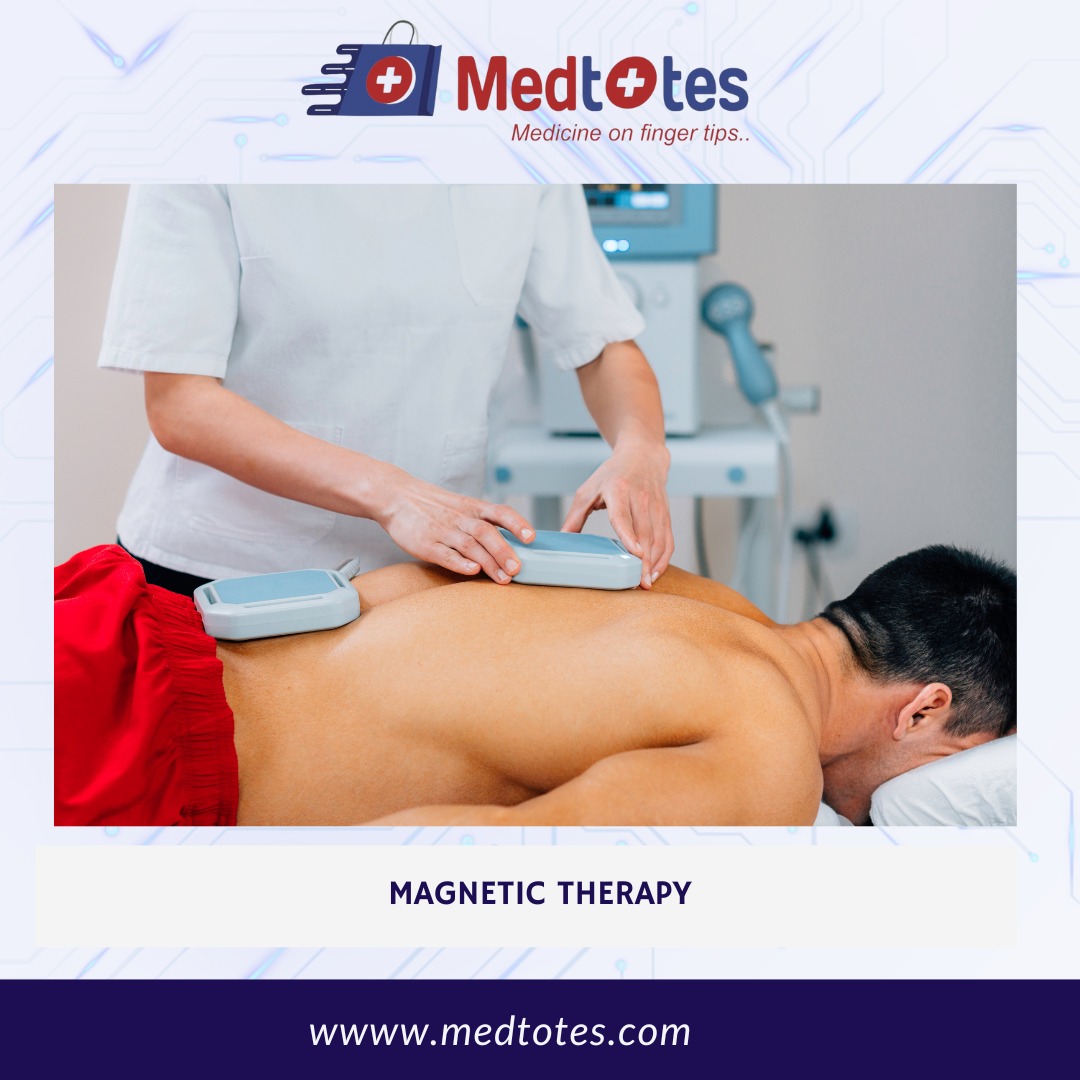Exercises like magnetic treatment have only recently become popular. In the past, a person would experience
agony if they lacked a magnetic field that might ease it. Therefore, this approach is still useful today. Whether
the effect is felt throughout the body or just in the area of discomfort depends. Like any other type of treatment,
magnetic therapy has positive and negative effects. We shouldn’t be hesitant to use this strategy. Although its
blood and water exhibit certain magnet-like characteristics, its conducting tissue is not magnetised.
What is Magnetic Therapy?
This treatment’s primary objective is to eliminate pain, which is why it is so effective. The procedure restores
the functionality of the cell’s polarity and enzyme systems. One advantage of magnetic therapy is that older
persons and those with compromised immune systems can tolerate it well.
The procedure is straightforward: the ailment is warmed to a depth of 9–12 cm, but no more than 2-3 degrees
should be raised. This localised heating impact promotes blood flow, strengthens the immune system, and
reduces edoema. This approach signifies the beginning of the body’s healing procedure.
Benefits and drawbacks of magnetic treatment
• A magnetic field can be used to cure a variety of diseases since it has various qualities.
• Heart conditions include dystonia, hypertension, and arrhythmia.
• Nervous system disorders such a stroke, neuritis, migraines, or spine damage.
• Deterioration of the body’s edge joints (thrombophlebitis, vein malfunction).
• Lung conditions such bronchitis, asthma, and tuberculosis.
• Skin injuries such as burns, frostbite, and acne.
There is a long range of ailments that magnetic therapy can address. Both advantages and disadvantages are
necessary; you cannot have one without the other. These include the following:
• Heart and blood vascular conditions.
• Having a pacemaker; having epilepsy, particularly if you experience frequent seizures.
• Numerous blood kinds.
• When infectious diseases are most contagious
• Home magneto therapy can be beneficial on occasion but to only seek out a doctor for this kind of care. The
majority of the patients who received magneto therapy had positive things to say about it. Many people claimed
to have less pain, get better sleep, and feel less anxious after the treatments.
Materials used to make equipment for magnetic therapy
There are many different kinds of magnets used in magnetic therapy. Electromagnetic (magnetism created by
electric current) and static are the two main types. There are three types of static magnets: rubber, ceramic, and
rare earth neodymium.
There are many kinds of magnetic therapy, such as static magnets, pulsing electromagnetic fields (PEMF), and
water that has been magnetized. Most of the time, static magnets are used as bands, wraps, and pads that are put
right on the area that needs help. In PEMF treatment, a device that makes electromagnetic fields that can be
changed to meet the needs of each patient is used. Magnets are used to change the properties of water in
magnetized water, which can help treat a wide range of diseases.
Conclusions
By reducing inflammation at the molecular level, it can facilitate faster healing.
According to research, magnetic therapy is most effective when used with the appropriate magnetic therapy
equipment and according to a specific treatment process. It is very obvious from reading the published clinical
research that multipolar therapeutic magnets are the most effective. It’s also a good idea to take some time to
comprehend and visualise the therapeutic magnet’s field of impact. The therapeutic magnet’s magnetic field
gradients should be strong enough to wrap around the target tissue and reach the damaged location.
Magnetic Therapy…!!

